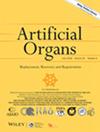The Impact of Over Three Years Commercial Use of Ex Vivo Normothermic Machine Perfusion for Liver Transplantation in the USA: A UNOS/OPTN Database Analysis
Abstract
Background
Data to date using normothermic machine perfusion (NMP) devices to resuscitate and assess marginal livers such as donation after circulatory death (DCD) livers has shown impressive prevention of ischemic reperfusion injury and ischemic cholangiopathy (IC). We examined the impact of these NMP devices over 3 years after their release for commercial use on deceased donor liver transplantation (LT).
Methods
We conducted a retrospective analysis of UNOS-SRTR data of livers recovered from DCD donors or older (≥ 60 years old) donation after brain death (DBD) donors for LT as well as the outcome of LT from DBD or DCD donors performed from 1/1/2016 to 6/30/2024 to compare differences with ischemic cold storage (ICS) versus NMP.
Results
Among 10 778 donors of DCD livers, 1987 donors used NMP, and 8791 donors used ICS. In NMP group, the proportion of discarded livers was significantly less (7.25% vs. 30.52%), donors were older, donor BMI higher and more expanded criteria donor than those in ICS group (all, p < 0.001). For older donors, 416 cases used NMP and in 10 708 cases the liver was recovered via ICS. The discard rate of livers in NMP group was significantly less (4.33% vs. 12.18%, p < 0.001) and donors were older and donor BMI higher than that in ICS group. In DCD LT, the incidence of primary nonfunction (PNF), acute rejection within 1 year after LT as well as graft failure due to IC and hepatic artery thrombosis (HAT) in NMP group were significantly less than those in ICS group.
Conclusion
In conclusion, commercial use of NMP has expanded the donor pool by accelerated usage of marginal livers such as DCD and older donors by permitting longer preservation and functional assessment of the liver. In addition, the usage of NMP for DCD LTs was associate with a reduced incidence of rejection, PNF, graft failure due to IC and HAT.


 求助内容:
求助内容: 应助结果提醒方式:
应助结果提醒方式:


